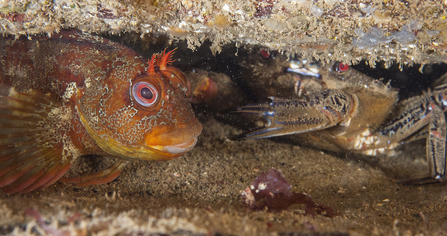- New series of reports – The Blue Carbon Mapping Project – provide the first estimate of carbon stored in UK seabed habitats, including in Marine Protected Areas (MPAs).
- 244 million tonnes of organic carbon* are stored in just the top 10cm of the UK’s seabed sediments – principally made of mud – plus vegetated habitats including saltmarshes and seagrass beds. 43% of this carbon is stored in MPAs.
- Seabed disturbances, including from bottom trawling and offshore development, are identified as threats to blue carbon stores, as nature charities call for stronger protections for UK seas.
The Blue Carbon Mapping Project, completed by the Scottish Association for Marine Science (SAMS) on behalf of WWF, The Wildlife Trusts and the RSPB, reveals that 244 million tonnes of organic carbon are stored in just the top 10 centimetres of UK seabed habitats, with 98% stored in seabed sediments such as mud and silt.
UK seabed habitats could capture up to 13 million tonnes of organic carbon every year – almost three times the amount sequestered by the UK’s forests – 4.8 million tonnes1 – although forests cover a much smaller area (32,500 km2).
Seas around the UK and Isle of Man cover nearly 885,000 square kilometres – over three times the size of the UK’s land mass. This vast area is host to habitats that capture and store carbon, known as ‘blue carbon’. They include seabed sediments (made of mud, silt and sand), vegetated habitats (seagrass meadows, saltmarshes, kelp forests and intertidal seaweeds), maerl beds and biogenic reefs, such as mussel beds and honeycomb worm reefs.
Carbon is primarily absorbed by phytoplankton, which drift to the bottom of the sea when they die and are added to seabed sediment. The research analysed the storage capacity of just the top 10cm of sediment. Some sediments are hundreds of metres thick and contain millennia’s worth of carbon, so the total carbon stored will be far greater.
The Blue Carbon Mapping Project highlights how physical disturbances to the seabed, including from human activity such as bottom trawling, as well as moorings and offshore developments, pose threats to blue carbon stores. Disturbing seabed habitats can release large amounts of carbon into the atmosphere, worsening climate change.

